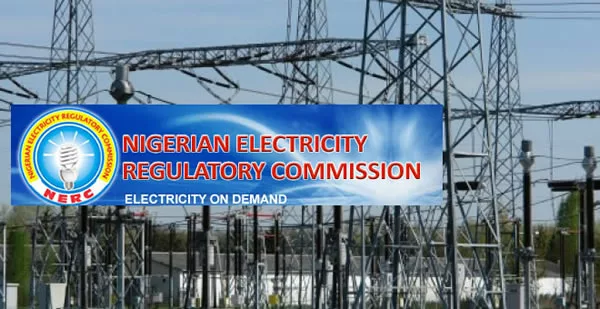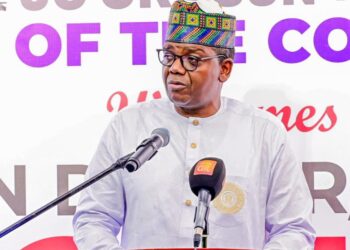Experts have faulted the reviewed Multi-Year Tariff Order (MYTO), by the Nigerian Electricity Regulatory Authority(NERC), as this development is still generating dust and debate among stakeholders in the electricity industry.
The conversation, which centers around poor metering exercise in the sector further exposes weak capitalisation and underinvestment which has left a yawning gap in the metering sub-sector of the industry.
The NERCs order for the new eleven distribution companies pushed tariffs up by double of what consumers were paying even though for the year 2024, the Federal Government says it will bear the burden for end-users.
While the government is taking up the N1.6 trillion burden, the Nigerian Bulk Electricity Trading company’s budget in the 2024 appropriations only showed a subsidy plan of N450 billion, which means that the government may have to raise the funding locally or from the international market amidst high borrowing profile.
This adjustment is coming as data shows that a total of 51,631 power consumers were metered by the 11 Electricity Distribution Companies(DisCos) in November 2023.
This slow pace in the metering exercise shows that the number of unmetered customers has thus moved to 7,313,039, according to NERC.
The commission states that the total number of registered customers in the NESI as of November 2023 was 13,112,134, while the total number of metered customers was 5,799,095, while the metering rate was 44.23 per cent.
According to the NERC, Ikeja Disco had the highest metering rate of 72.43 per cent, but was the only Disco that did not meter any customer in November 2023.
The other 10 power distribution companies provided meters for customers in their various franchise areas.
The report also revealed that the highest complaints in the NESI in November was the lack of meters, as this accounted for 62.23 per cent of the total complaints in the sector during the review month.
Other categories of complaints include billing (9.33 per cent), interruption (8.27 per cent), disconnection (0.97 per cent), voltage (1.63 per cent), load shedding (0.28 per cent), delay in connection (0.17 per cent), and others (17.13 per cent).
It stated that the total number of complaints received in November was 108.542, while 103,898 complaints were resolved, as the resolution rate was 95.72 per cent.
In November last year, the Minister of Power, Chief Adebayo Adelabu, declared that the short-term focus of the Federal Government in the power sector was to prioritise metering, electricity distribution and transmission to enhance power supply nationwide.
Adelabu, who spoke in Abuja, also highlighted the power sector strategy roadmap, emphasising a bottom-up approach to prioritise impact over the previous top-down strategies.
The minister was quoted in a statement from his ministry as saying, “We will focus on customers, down to distribution and transmission infrastructures in the short term, ensuring a significant portion of currently generated power reaches consumers.
He also stated that attention would be given to the generation segment of the sector, particularly in distributed power (embedded) from renewable energy sources, while concurrently advancing baseload power through thermal and hydro plants in the medium to long term.
The minister spoke on regional energy potentials, citing solar energy in the North, small hydropower plants in the middle belt and South-West, hybridised with solar for maximum output.
However, analysts points that if government decides to approve the payment of cost-reflective tariffs this year, electricity consumers would be required to pay between N111 and N215 per kilowatt hour (Kwh) of electricity as against the current N56.57 to N65.99 being spent on the same quantity of power.
A document analysing the 2024 “Business as Usual” scenario for the sector in 2024, also indicated that government will then also need to withdraw the current subsidy on power paid operators, which is expected to hit N1.65 trillion by the end of this year.
The minister of Power, Adebayo Adelabu, at a recent function in Abuja in November, stressed that President Bola Tinubu halted the implementation of a hike in electricity tariff since the impact of the petrol subsidy removal was already becoming unbearable for Nigerians.
“Tariffs should have been raised months back, but Mr President said until we are able to achieve regular and incremental power supply we can’t touch the tariff.
“For political reasons and empathy, you cannot cause additional burden on Nigerians. We just had the removal of the fuel subsidy, we are talking about the exchange rate skyrocketing, galloping inflation and so many others things that bring hardship to the people.
“Mr President is trying to relieve this hardship through various forms of palliatives. So it is not politically expedient and reasonable to now implement a tariff that is more like dumping the existing tariff,” the minister argued.
But the report from NERC breaking down what the tariff regime would look like this year, further showed that for every month in 2024, the federal government will pay a subsidy of N137.97 billion if the “business as usual” scenario prevails.
When eventually the federal government and NERC give the go-ahead, Yola Distribution Company (Disco) customers will pay the highest amount per kilowatt of electricity of N215.64, followed by Jos with N136.64 and Kaduna with N131.41. Currently, Yola, Jos and Kaduna Discos’ customers pay N65.99, N60.61 and N57.45 respectively.
The three will be closely trailed by Kano, Ibadan and Enugu Discos whose customers will spend N126.58, N126.06 and N125.85 as against the current N58.82, N62.48 and N59.04 to buy a kilowatt hour of power.
Port Harcourt customers will pay N125.77 as against the current N61.40, Benin will pay N125.19, Abuja Disco customers will shell out N122.82 while Ikeja and Eko electricity customers will pay N112.30 and N111.60.
According to the analysis by NERC, Port Harcourt currently collects N61.40, Benin collects N60.06 while Abuja, Ikeja and Eko customers pay N63.34, N56.57 and N59.49 respectively.
But if the government’s projected subsidy of N1.65 trillion on electricity is sustained in 2024, Ikeja Disco will get the highest reimbursement or subsidy of N239.41 billion for the year, followed by Abuja Disco with N221.59 billion.
Of the 11 power distributors in the country, Eko will get N187. 69 billion subsidy payment, Ibadan will get N182.72 billion, while Benin will be paid N150.09 billion during the year if the status quo remains.
Besides, Kano and Port Harcourt will receive N128.93 billion and N128.86 billion in 2024 if the federal government continues to reimburse Discos’ underpayments while Enugu and Kaduna Discos will get N125.89 billion and N123 billion subsidy payment in 2024 if there’s no raise in tariffs.
Ibadan and Yola will receive N108 billion and N57 billion as cost recovery during the period under review.
But the report also revealed that Discos, between 2015 and 2021, a period of six years, were only able to achieve 56 per cent of their expected capital expenditure investments projections during the period. From a forecast of N465.19 billion, the power distributors were only able to put in N258.29 billion during the six years.
The data also indicated that the Transmission Company of Nigeria (TCN) only achieved just 28 per cent of its expected capex from 2013 to 2020. The wholly government-owned entity only spent N181 billion on investment in capital projects as against the projected N655 billion during the period.
By the rules, Discos after approval from NERC which are also expected to engage in widespread stakeholders’ engagement, are supposed to review the prices of electricity to account for changes in factors such as inflation, exchange rate, gas price and generation capacity.
Also, major tariff reviews are supposed to be conducted every five years, during which all inputs are reviewed in consultation with stakeholders, while the minor reviews are done bi-annually.
The minor review involves collection of actual data from the National Bureau of Statistics (NBS), the Central Bank of Nigeria (CBN) and the System Operations Unit of the TCN.
As for the metering challenge, the data showed that out of a customer population of N12.4 million, metered customers were just 5.41 million, while unmetered remained over 7 million.
Ikeja, according to the NERC data, had the most metered customers of 69 per cent, followed by Abuja and Eko with 59 per cent apiece. The least metered franchise was Yola Disco.
‘Several initiatives of the commission and previous federal government mass metering programmes had resulted in the deployment of 2.4 million meters,’ it stressed.
Reacting to the review while speaking to LEADERSHIP, Kunle Kola Olubiyo, warned that the tariff will translates to increase in cost of production and higher cost of doing business , job loses, attendance inflation and bring untold hardship on the poor masses .
Olubiyo, who is the President, Nigeria Consumer Protection Network , argued that, yet this do translates into efficient service delivery and reliable power supply.
Olubiyo who was a member of the National Technical Investigative Panel on Power System Collapses / System Stability And Reliability questioned key indicators used in arriving at the current templates of electricity tariff review methodology.
He alleged the document was largely populated by over invoicing, over bloated prices of gas feedstock ,falsified ATC & C Losses, fake generation capacity.
He said, it is important to note that from May 2013 – January,2024 peak generation, eaks transmission wheeling capacity, load dispatch and load evacuation has remained stunted at 5, 800 megawatts..
He noted that, in spite of increased public sector’s spending spree in a supposedly privatised Nigerian electricity sector value chain, the end users, customers just like ever before are being made toay for darkness and services not rendered.





